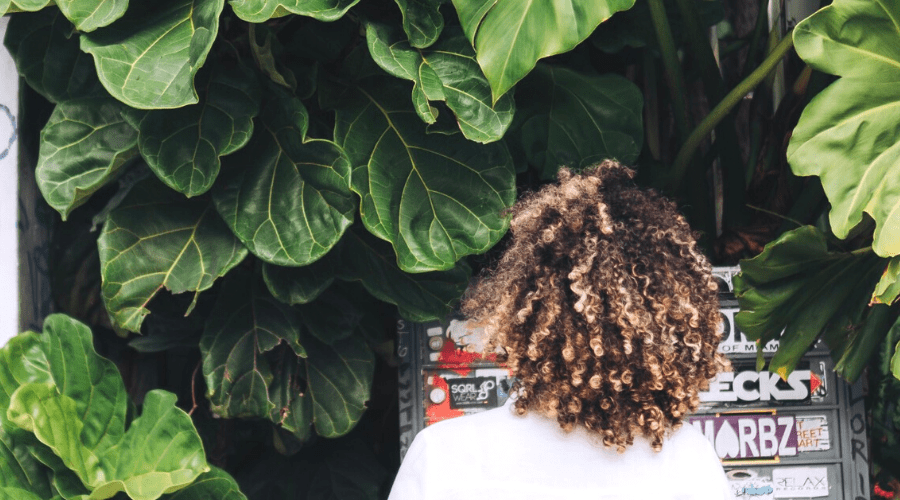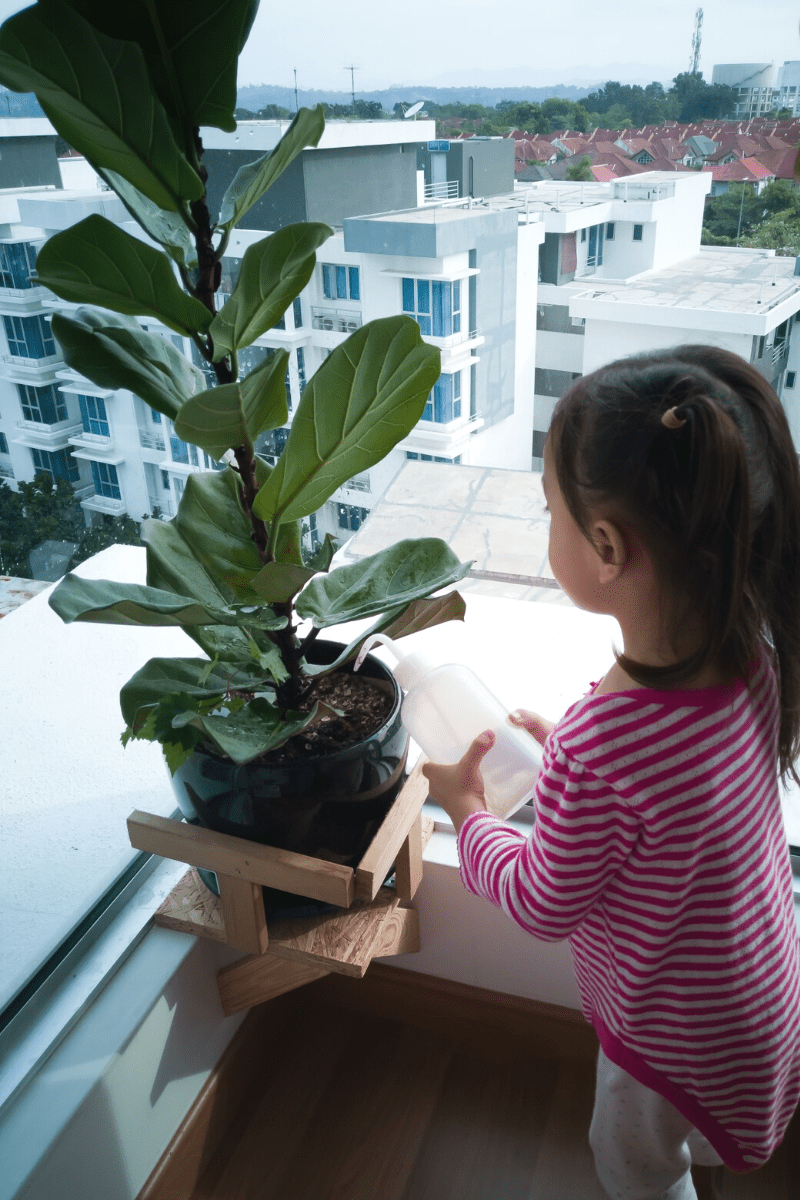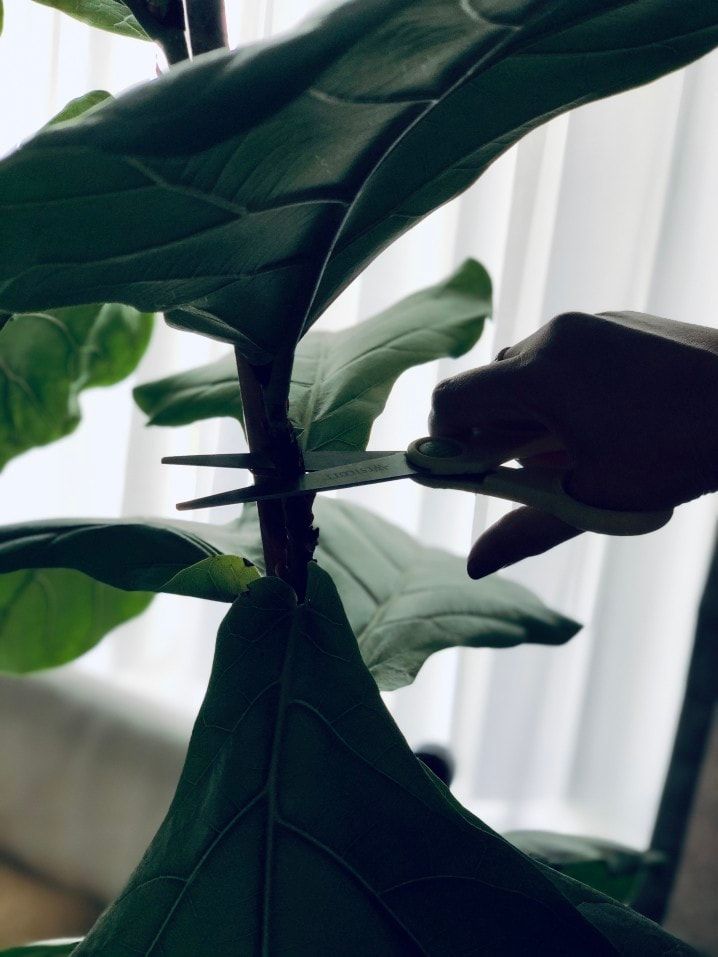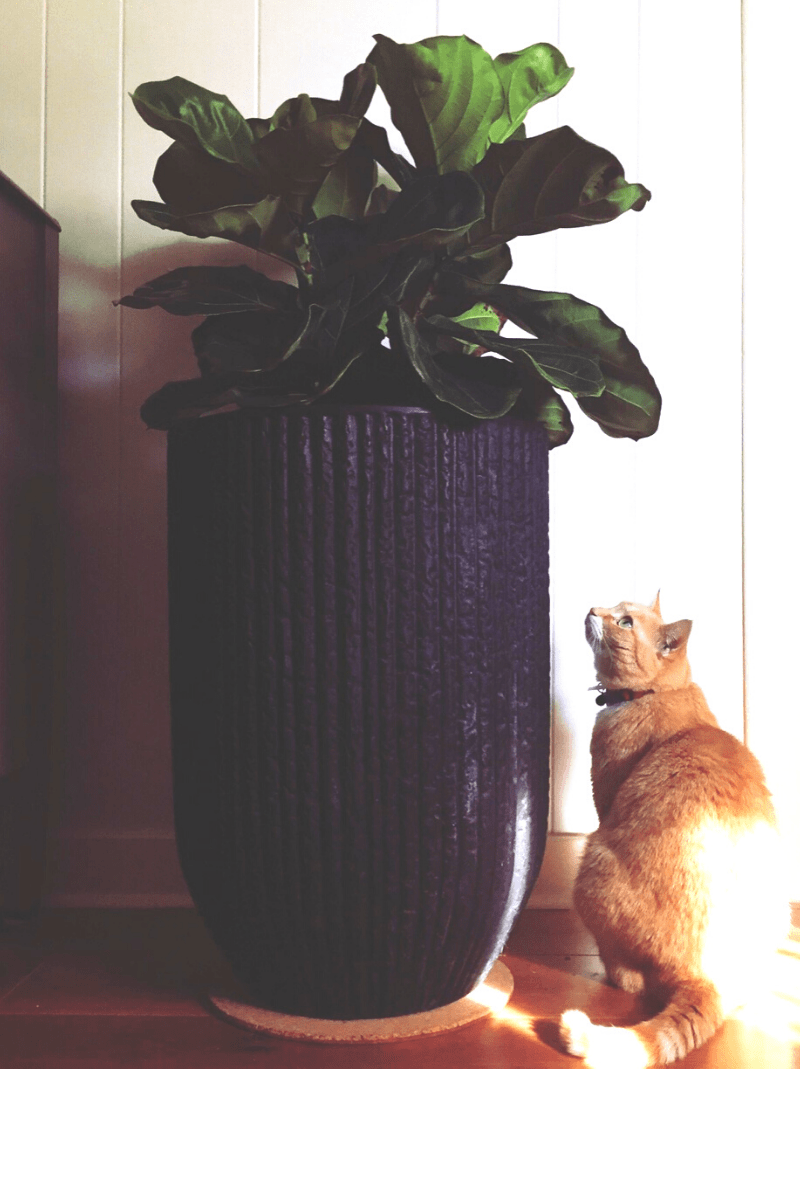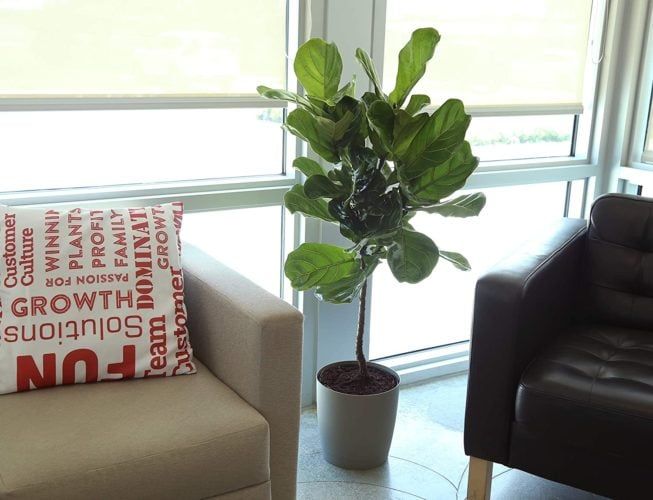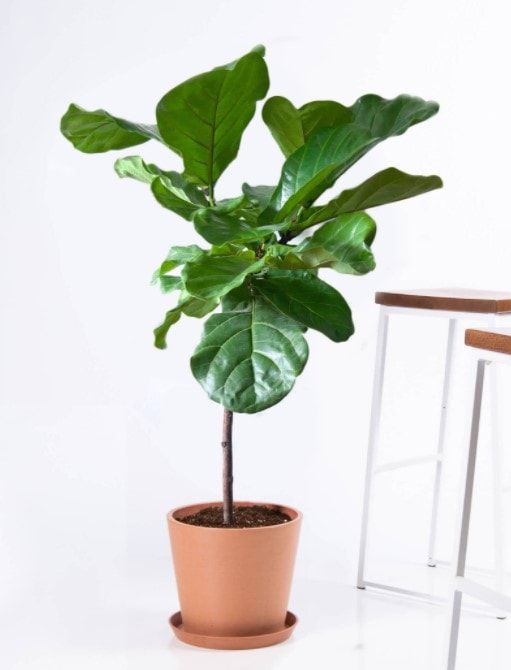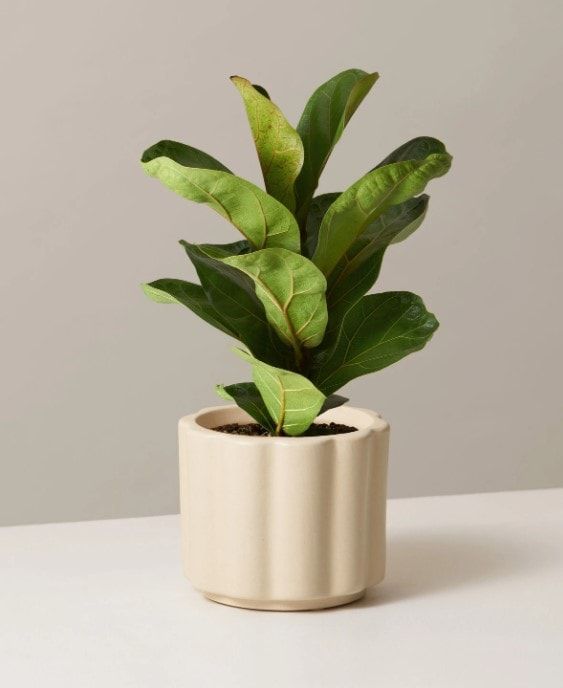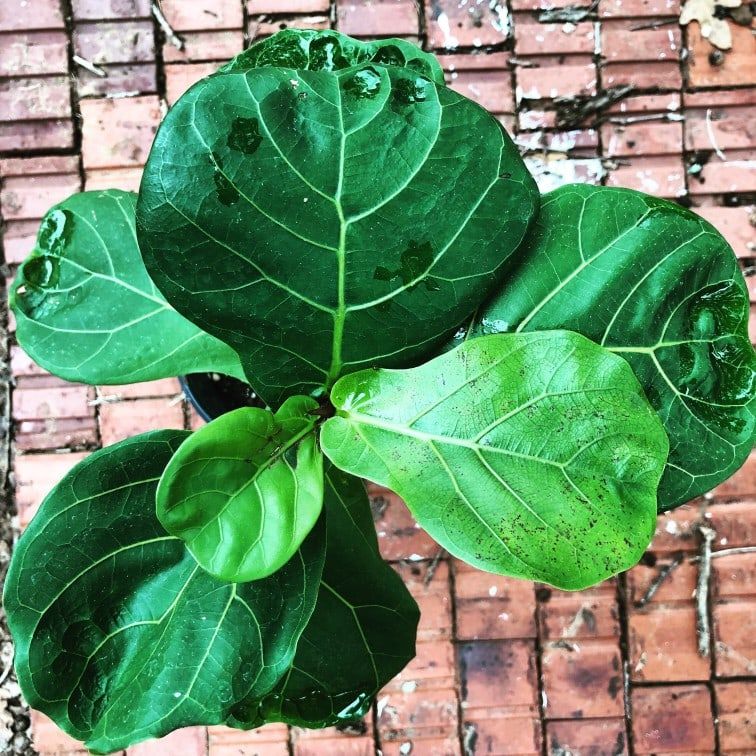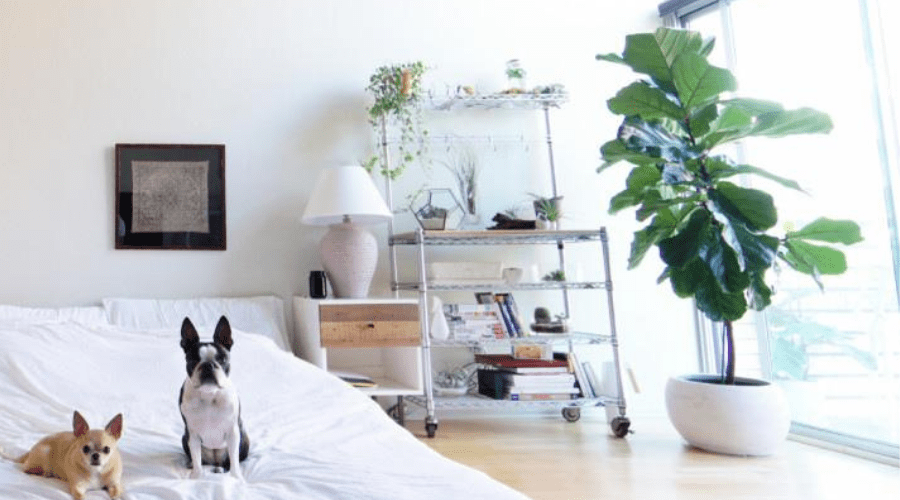Fiddle leaf figs are gorgeous, striking additions to interior spaces, with large, glossy leaves and a towering presence, the latter being contingent on your ability to help your Ficus lyrata flourish. These pricey plants can be hard to care for if you don’t know what you are doing, but lucky for you, our comprehensive guide covers everything you need to know about fiddle leaf figs, including in-depth and easy to understand instructions for light, water, pest control, fertilizer and more.
Fiddle Leaf Fig Details
Ficus lyrata
AKA Fiddle Leaf Fig
Light: Bright, filtered light
Water: Always keep moist
Temperature: 60 - 80 F
Size: 4 - 7 feet tall
Pests: Aphids, mealybugs, mites, scale, whitefly
Disease: Root rot, fungal diseases
Toxicity: Mildy toxic to humans and pets
Fiddle Leaf Fig Benefits
A fiddle leaf fig is a large specimen plant with big, dark green, violin-shaped leaves that grow off of one central stalk. They make excellent houseplants although they are native to a place far different than your 2-bedroom in Chicago, originally growing in the tropics. Because of this, they really enjoy bright, indirect sunlight, which your indoor growing can easily provide, and humidity, which you can replicate around the plant. However, they are fairly tough plants and can withstand mistreatment for extended periods of time.
Fiddle leaf fig trees not only add a touch of gorgeous greenery to your house, they also can purify your air, removing harmful toxins. Cleaner air improves breathing, enhancing mental clarity, and enabling better sleep.
Caring for Your Fiddle Leaf Fig Tree
Light
Place your fiddle leaf fig in a spot with bright, indirect sunlight that is protected from cold drafts from air vents or the outdoors in the winter months. Your plant should be next to a window but not in a position that it will be exposed to direct light.
Once you position your fiddle leaf fig do not move it! Fiddle leaf figs love to stay in one, consistent spot. Once a week you can slightly, gently turn it so that all of the leaves receive equal sun.
The relocation process may shake your fiddle leaf fig up for a month or two, resulting in leaves that start to look brownish a month later but it will recover, it just needs time to adjust.
Water
You should water your fiddle leaf fig once every 7-10 days, soaking it and then allowing the soil to fully dry out.
Fiddle leaf figs love to be soaked when they are watered, to the point that their soil is dripping. Make sure your container has adequate drainage to handle this watering method and consider having a drip tray under your plant. If you don’t want to invest in a drip tray, suspend your plant over a bucket when you water it, allowing the water to move through the soil so the roots do not have to sit in excess water for too long.
Pro Tip: To see if your fiddle leaf fig’s soil is dry dip your fingers 2 inches deep into the soil. If you feel moisture, don’t water it.
Temperature and Humidity
Fiddle leaf fig plants love humidity! Mist your fiddle leaf fig plant once a week or set a bowl of water next to it. When sun hits the water it will evaporate, producing humidity.
Fertilizer
Fertilize your fiddle leaf fig plant with a 3:1:2 nitrogen-phosphorus-potassium fertilizer once a month in the spring and summer. Do not fertilize in fall or winter, and avoid getting fertilizer directly on the plant stem or foliage as it may cause discoloration.
Propagation
Fiddle leaf fig propagation can be tricky. It’s not guaranteed that your propagation efforts will work or that the fiddle leaf fig you grow will be of the same quality as the one you already have. However, with fiddle leaf fig plants being so expensive, and the propagation process for them being relatively easy, why not try?
Using stem tip cuttings you can propagate your fiddle leaf fig plant. Fill a container with water. You can use tap water but let it sit overnight so that the chlorine evaporates from it.
Take cuttings from your fiddle leaf fig that have 2-3 healthy leaves, using clean scissors to snip 3 inches below the first leaf. Immediately place it upright in the water. You can also dip your stem in rooting hormone before placing it in the water to increase its chances of growing roots.
Leave the container in a spot with bright, direct sunlight. If the water starts to look cloudy, replace it.
Check on your stem regularly. In 3-4 weeks it should grow roots. Allow them a week after you first spot them to fully grow out.
Plant your stem in moist potting soil. For three months regularly water and fertilize it. Before you know it you will have another fiddle leaf fig plant!
Growth Rate
Fiddle leaf fig plants that are grown inside can reach heights of 6 feet or taller, making them a striking, statement plant. Some varieties are cultivated to be more bushy and compact and will only reach heights of around 4 feet. If treated right, your plant will grow rapidly, eventually touching your ceiling if you let it get that high.
Pruning
If you want to shape your plant do so in the spring so it can regrow.
When leaves brown, prune them away to conserve the plant’s energy. Cut the stem of the leaf at an angle with sharp, clean pruning shears. Do not remove more than 8 leaves at a time or your plant may develop shock.
Encourage new growth by pinching off the buds at the top. You should see some sap start to run when you do so. If the plant gets too tall you can also cut off the entire top.
Repotting
It’s a good idea to repot your fiddle leaf fig on an annual basis. Remember, fiddle leaf figs don’t love change, so be gentle when you repot.
When your plant looks too big for its pot and its roots are starting to climb out of the drainage holes, you should repot.
Remove the root ball from the old pot and trim away any brown or rotten roots. Create a hole in the new container, pushing the new potting soil to the sides of it. Loosen the root ball gently and place it in the soil. Top with more soil and water thoroughly.
Each year, increase the pot size by a couple of inches until you reach a container size that you do not want to surpass. Then, scrape off the top few inches of soil and replace it with new potting soil on an annual basis.
How to Grow a Fiddle Leaf Fig Plant Outside
You can only grow fiddle leaf figs outside in U.S. Department of Agriculture plant hardiness zones 10b and 11, along the coast of southern Florida and southern California. When you grow your fiddle leaf fig outside make sure that you plant it in a sunny location that is protected from the wind. Prune your tree regularly, removing dead branches or branches with tight crotches. Fiddle leaf figs grown outside can reach heights of 50 feet.
Where to Buy Fiddle Leaf Fig Trees
Excited by the amazing benefits of fiddle leaf figs and looking to buy your own?
Check out your local garden center or an online vendor.
A great online option is the Costa Farms Fiddle Leaf Fig tree. The trees that they ship are at peak healthiness, 4.5 feet tall, and arrive in a 12-inch pot. They take the utmost care with shipping them so no need to worry about receiving a damaged plant.
Costa Farms Fiddle Leaf Fig (4.5-Feet Tall)
Adds life and design to your home, porch, or office. Water when top inch of soil feels dry, water once a week, allow water to drain. Loves indoor bright filtered light. Place near sun-facing window. Height at shipping is approximately 54-inches tall, measured from the bottom of the pot to the top of the plant.
If you want a prepotted, "living room ready" plant that doesn't have to grow into its space, Bloomscape's got you covered.
Fiddle Leaf Fig in Custom Planter (Extra Large)
Native to the tropic climate of Western Africa, the Fiddle Leaf Fig thrives in very warm, bright, and humid conditions. This can make them somewhat challenging to grow indoors, but luckily they are relatively tough and can withstand less than perfect conditions.
If you'd like a prepotted smaller fig to raise as your very own, The Sill is your best choice. Their plants are very healthy and the customer service is excellent.
Medium Fiddle Leaf Fig in Custom Planter
The Fiddle Leaf Fig is famous for its broad, vibrant green leaves with prominent veining. It prefers a stable environment and can be fickle when temps fluctuate. Keep it in bright light, and water about once every 1–2 weeks.
Fiddle Leaf Fig Varieties
Unlike many other houseplants, fiddle leaf figs do not have a range of varieties. The most variance you will see in fiddle leaf figs has to do with their source and size.
The main fiddle leaf fig variety is Ficus lyrata. Growers have been working on making more compact varieties, like the compacta and suncoast cultivars, but they are not yet widely sold. Those cultivars grow to be around 4 feet tall while more typical fiddle leaf figs grow to be about 7 feet tall.
Common Fiddle Leaf Fig Problems
Fiddle leaf fig plants are relatively easy to care for and maintain, but they can run into a few problems. Below are the issues you may encounter while growing your fiddle leaf fig, and how to solve them.
Watering Too Little
If your plant starts to lose leaves it is likely that you are not watering it enough and/or not supplying it with enough humidity. Make sure that you are misting your plant frequently or giving it humidity in another way, like setting a bowl of water next to it or adding a humidifier to the room it resides in.
Watering Too Much
If your leaves develop green and brown spots (shown right) you are overwatering your plant or not supplying it with an adequate drainage method. You need to fix the problems ASAP because if root rot sets in it can be difficult to recover your plant. When water sits near roots for too long it awakens dormant pathogens who feed on the plant’s root systems. By allowing the soil to dry out between waterings you keep those pathogens starving so your roots stay safe.
Root Rot
If you just read the warning about root rot and thought, “Oh, s#@t, my plant totally has that” worry not, your plant could live to fig another day.
To rehabilitate it, first, remove all sick and dead leaves. Then, lay the plant on its side and gently remove it from its container. Assess the plant’s root system and remove all of the rotten sections, which will be brown and soft, with sharp, clean, shears. Repot the plant in fresh potting soil and water it with root rot formula. Allow the soil to fully dry out before the next watering. Your plant may recover, it depends on how bad the situation has become.
Spotting on Leaves
Leaf spots can occur because of damage to your leaves, mites, or fungal diseases. Spray your plant with a natural fungicide or pesticide to combat the latter two problems. To deter future issues, make sure that there is enough airflow around your plant, that not too much moisture is sitting on the leaves after mistings, and that you regularly are removing dead leaves and twigs from your plant. If your plant ever becomes dusty use a damp washcloth to wipe down its leaves. Repeat every month to keep your plant looking great and to ward off pests.
Conclusion
Now you know everything you could possibly need to about fiddle leaf fig trees! If you follow these pro tips and simple steps your plant is guaranteed to be as fit as a fiddle.
I hope you enjoyed this article! If you did, be sure to share it and comment below with any growing questions.

